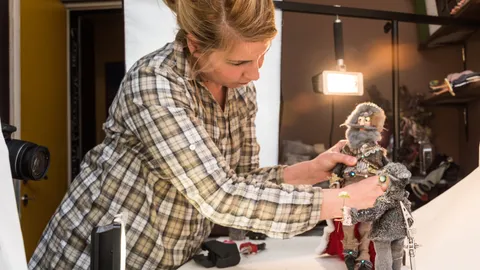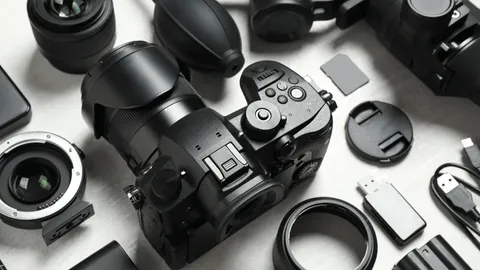Mastering the Essentials of Effective Video Production -In today's digital world, videos are like the kings and queens of the internet. We all watch videos every day, whether they're teaching us something useful or just making us laugh with cute cats. But have you ever wondered why some videos stick in our minds while others fade away quickly? Well, it's because of the important things that go into making a great video.
In this complete guide, we're going to explore the world of making videos and uncover the secrets that can turn a regular video into something truly amazing. We've already talked about this in our previous article, "What Are the Essential Elements of Effective Video Production?", but this guide will give you a full and detailed look at the topic.
Understanding Your Audience
Before you start making your video, it's really important to know who you're making it for. Take some time to figure out your target audience – their age, gender, interests, and what they like. This way, you can make sure your video matches what your viewers care about the most.
For example, if you're making videos about vegan cooking, knowing that your audience cares about being eco-friendly and ethical will help you choose the right topics. But understanding your audience isn't just about numbers; it's also about understanding what they want and need.
It's also important to know what your audience likes and dislikes. You can do this by asking them questions, talking to them on social media, and reading the comments they leave on your videos. Use this feedback to make your videos even better. For example, if you see that your gaming audience likes detailed tutorials, you can make more videos with lots of information.
Remember, understanding your audience is an ongoing process. Keep talking to them to make sure your videos stay interesting and helpful.
Making Videos Just for Your Viewers
Once you know your audience really well, it's time to make videos that are just for them. You've done your research, figured out who you're talking to, and learned what they like. Now, use all that information to make videos that your viewers will love.
This might mean changing how you talk in your videos, talking about the things your audience cares about, or helping them with the problems they have. The key is to make your audience feel like you really get them. Remember, a video for gamers should be different from one for fitness fans. So, make your content match your audience, and you're on the right track.
Clear and Compelling Storytelling
Storytelling isn't just something we do at bedtime; it's a super important part of making good videos. Creating a strong story that grabs your viewers' attention and keeps them interested is the key.
Your video should be like a rollercoaster ride, with a clear beginning, middle, and end. You want to take your viewers on an exciting journey that leaves them wanting more.
To keep your audience engaged, you need to make sure your story is interesting and the pace is just right. Start with something really interesting right at the beginning to grab your viewers' attention.
You can do this by asking questions, showing a problem, or creating suspense. In the middle of your video, build on this initial interest by sharing valuable information.
Keep the pace lively to keep your viewers engaged. Finally, at the end, give them a satisfying conclusion or tell them what to do next. This structure will keep your viewers interested from start to finish.
Good storytelling also involves making the characters in your video interesting. Whether you're the main character or you're telling the story of a product, make sure your audience cares about the characters. Share stories that they can relate to, show off their personalities, and create emotional connections. This way, your viewers are more likely to watch the whole video and remember it as a great experience.
Pre-Production Planning
To make a great video, you need to start by planning everything carefully before you even start filming. Here's how:
- Come Up with a Clear Idea: Think about the message you want to share in your video and the best way to do it. Make sure it matches what your audience likes and needs.
- Create a Production Schedule: Plan out every step of the process. Decide when and where you'll film, who will be involved, and what things you'll need. A good schedule helps you stay on track and not spend too much money.
- Budget Wisely: Figure out how much your video will cost. This includes things like equipment, location fees, paying people, and what you'll need after filming. Make sure you have enough money to cover these expenses. Spend your money smartly, thinking about how big your team should be, what kind of equipment to use, and where to film.
- Plan for Problems: Think about any problems that might come up while filming, like bad weather, equipment breaking, or unexpected issues. Make backup plans so you can stay in control and keep things running smoothly.
When you plan everything carefully before you start filming, you'll have a better chance of making a great video without any unexpected surprises or stress.
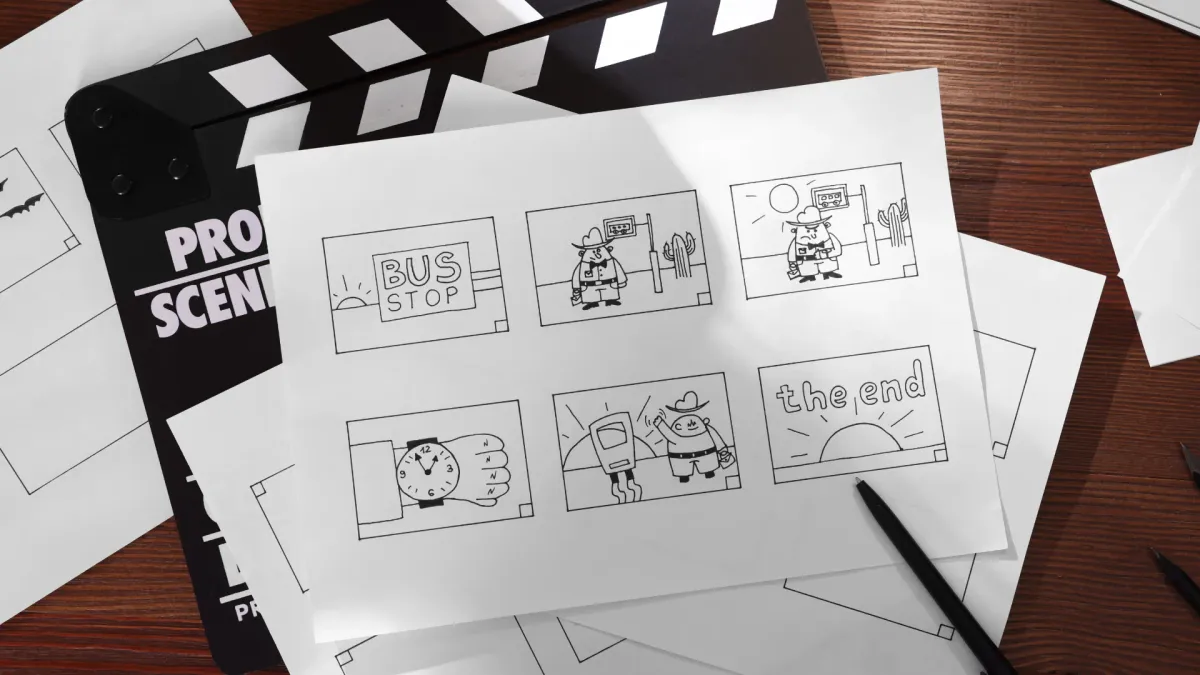
Scriptwriting and Storyboarding
The script is like the backbone of your video. It's a guide that your team follows while filming, and it's super important for making sure your message comes across clearly.
When you're writing your script, try to keep it interesting and short. Every word should have a purpose and help tell the story. Start with something exciting to grab your viewers' attention right away. Outline the main points you want to talk about, and make sure your script flows smoothly from one point to the next.
Once your script is ready, it's time to make storyboards. Storyboards are like drawings that show each shot in your video, so you can see how it will look. They help you plan things like how the camera will be positioned and how scenes will change. Storyboards are especially helpful when you're working with a team because everyone can see what the final video will look like.
Making sure your script and storyboards match up is really important for a smooth filming process. It helps avoid confusion and surprises on the day of shooting. Each shot in your storyboard should match a specific part of your script.
This way, you save time during filming, and your video will look better and make more sense. But remember, it's also good to be flexible. Sometimes you might come up with better ideas while filming, so stay open to changes if they make the video even better.

Filming Techniques
With your pre-production planning, script, and storyboards ready, it's time to start filming for real. Choosing the right camera and setting it up properly is a big deal. Depending on your project, you can use a high-quality DSLR camera for a professional look, or if you're on a budget, a smartphone can still give you good results. Just make sure your camera is set up correctly with the right settings for things like picture quality, how fast the images move (frame rate), and brightness (exposure).
Don't forget about lighting and how you arrange everything in the frame – that's called composition. Good lighting can make your video look awesome. Try different kinds of light, like sunlight or artificial light, and use diffusers to create the mood you want. Pay attention to how you arrange things in your shots and where you put important stuff, following the rule of thirds to make your shots look great.
Getting good audio is super important too. Invest in a good external microphone to make sure the sound is clear and nice. Also, pay attention to the sounds around you and try to keep them as quiet as possible. When you're done filming, make sure the audio matches up with the video when you're editing it. This way, your viewers will stay interested.
By learning these filming techniques, you'll be well on your way to making videos that look amazing and sound great.
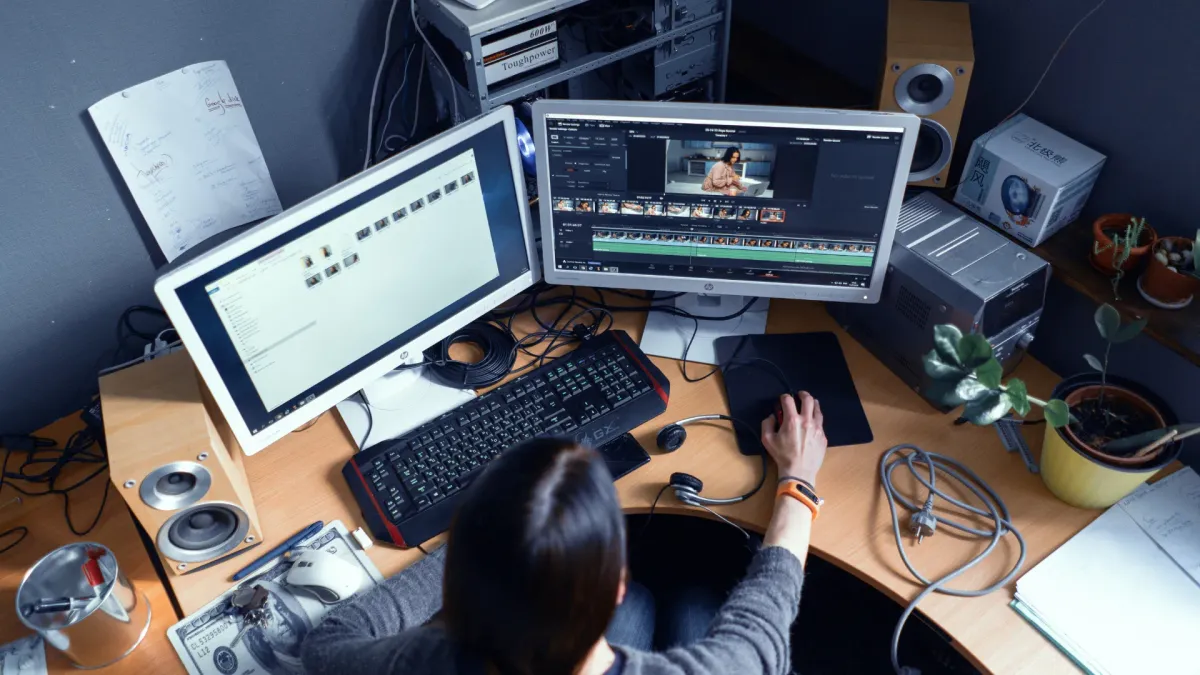
Effective Editing
Video editing is where the real magic happens. This is the part where you take all the raw video footage and turn it into a polished masterpiece.
Video editing is like putting together a puzzle. You choose the best pieces (or takes), put them in the right order, and add transitions to make everything fit together nicely. You'll need video editing software that matches your skill level, whether you're just starting or have some experience. Learn how to use the software so you can make your video even better.
While editing, focus on making everything flow smoothly. Make sure each scene leads into the next one without any hiccups. Get rid of any parts that don't add to the story or might distract your viewers. You can also add special effects or extra visuals to make your video more engaging. And don't forget about the pacing – adjust how fast things change to keep your viewers interested. A well-edited video should feel like a smooth and exciting journey from the beginning to the end.
Good editing also means making sure the colors and brightness in your video look just right. You can make your video look more professional by adjusting the colors and contrast to give it a consistent look. You can also use color to set the mood – warm colors can make it feel inviting, while cool colors can make it seem more cinematic.
By taking the time to polish your video during editing, you'll make sure your message comes across clearly and that your viewers stay interested the whole way through.

Adding Impactful Visual Effects
Visual effects can make your video even cooler by adding extra fun stuff to it. You can use graphics and animations to make your story more interesting.
When you do this in the right way, these effects can help explain tricky ideas, make important points stand out, or just make your video more fun to watch. For example, you can use animated charts to show numbers or motion graphics to make text look cool. These visual effects can grab your audience's attention and make your video stand out online.
But, it's important to make sure everything in your video looks the same. Use the same style, colors, and graphics that match your brand or what your video is about. This way, your video looks good and people can recognize your brand. Visual effects should make your video better, not harder to understand, so find the right balance between being creative and being clear.
Don't go overboard with visual effects, though. Only use effects that make your story better, not more confusing. Each visual thing in your video should have a reason and make the story better. Before using any visual effects, think about how they help tell the story and keep the viewer interested. When you use visual effects well, they can make your video memorable and leave a strong impression.

Audio Enhancement
Having great audio is a big deal when it comes to making good videos. Sound design and mixing are important because they help set the mood, make the video better to watch, and make sure people can understand what's being said.
To get really good audio, you should get a good microphone. Using an external microphone, like a shotgun microphone or a lavalier mic, can make a huge difference in getting clear and crisp sound. Make sure to set up and test your audio equipment properly before you start recording.
Sound design isn't just about recording people talking. It's also about adding other sounds like background noise, music, and sound effects to make the audio experience more interesting. These sounds can make people feel certain emotions, highlight important parts of the video, and make viewers feel like they're in the video's world. Use sound design smartly to make the story better and get your audience more involved.
If your video has someone talking in the background or narrating, make sure it's recorded really well and matches the video. The person talking should be clear, easy to understand, and show the right feelings.
Think about using a voice actor or narrator who sounds like the kind of person your audience would like. Background music is also a big deal because it can make people feel certain things while watching your video. Pick music that goes with the mood and pace of your video, and make sure it doesn't drown out what people are saying or other sounds in the video.
Optimizing for Mobile and Web
In today's digital world, your video needs to work on lots of different platforms and devices. To make sure it does, you need to understand a few things about video formats and codecs.
First, you should pick the right video format and codec based on where you want your video to be seen and who's going to watch it. Different platforms might need different settings, so make sure you set things up the right way.
Make sure your video works well on mobile devices and the web by choosing the right settings. Think about things like how clear the video is, how fast the images change, and how much the video is compressed (made smaller). You need to find a balance between having a good-looking video and making sure it loads quickly and plays smoothly on all kinds of devices and internet connections. High-definition videos might look really nice, but they can take a long time to load, and people might stop watching.
It's really important to test your video on different devices and platforms to make sure it works everywhere. Check that it plays well on phones, computers, and in different web browsers. Also, make sure your video adjusts to different screen sizes and how people hold their devices. This way, your video will reach more people, and everyone can watch it easily, no matter what they're using.
SEO and Video Metadata
Creating a great video is just the beginning. Now you need to make sure people can find it. That's where Search Engine Optimization (SEO) and video metadata come in.
To make your video show up better in search results and get more views, start with the title and description. Your title should be catchy and tell people what your video is about. It's also a chance to include words that people might use to search for videos like yours. Keep it short and interesting.
The description is just as important. It's a chance to explain more about what your video is about and include more keywords without overloading it. Use clear and helpful language to describe what viewers will see.
Don't forget to add tags and keywords to your video's info. This helps search engines understand what your video is about and suggest it to people searching for similar stuff.
Your video's thumbnail is also super important. It's the small picture people see before they click to watch your video. Make it look cool and related to what your video is about. It should also match your brand's style. Thumbnails really matter because they can make more people click on your video. Try out different thumbnails to see which one works best and gets more views.
Engaging Thumbnail Creation
Your video's thumbnail is its first impression, and as the saying goes, "you never get a second chance to make a first impression." Designing click-worthy thumbnails is an art that can significantly impact your video's performance. When creating thumbnails, consider the following:
- Relevance: Ensure that your thumbnail is directly related to the video's content. It should give viewers a clear idea of what to expect when they click.
- Visual Appeal: Use high-quality, visually appealing images or screenshots from your video. Bright colors and contrasting elements can grab attention.
- Text Overlay: Adding concise, engaging text on the thumbnail can highlight the video's topic or main point. Keep it short and readable, even on small screens.
- Consistency: Maintain a consistent style for your thumbnails to build brand recognition. When viewers see your thumbnails, they should instantly associate them with your content.
- A/B Testing: Don't rely on guesswork. Experiment with different thumbnail designs to see which ones generate more clicks and engagement. Many platforms offer A/B testing features.
A captivating thumbnail can be the difference between a viewer scrolling past your video and clicking to watch it. Take the time to create thumbnails that intrigue and entice, and you'll increase the chances of your video getting noticed and shared.

Social Media Integration
Leveraging social media platforms is a powerful way to expand your video's reach and engage with your audience. Here are some strategies to make the most of social media integration:
- Platform Selection: Choose the social media platforms that align with your target audience and content. For example, Instagram and TikTok may be ideal for short, visually appealing videos, while LinkedIn and Twitter could be better for professional content.
- Video Promotion: Craft attention-grabbing captions and use relevant hashtags to accompany your video posts. These captions should provide context and encourage viewers to watch your video.
- Timing: Post your videos at times when your target audience is most active on the platform. Use insights and analytics tools to determine the best posting schedule.
- Engagement: Interact with your audience by responding to comments, questions, and messages promptly. Building a rapport with your followers can foster a sense of community and loyalty.
- Sharing: Encourage viewers to share your video on their own social media profiles. Share buttons and calls to action within the video can prompt viewers to spread the word.
- Paid Promotion: Consider running paid social media ad campaigns to reach a broader audience. Social media platforms offer targeting options that can help you reach users interested in your content.
Social media platforms are dynamic and ever-evolving, so it's essential to stay updated with the latest trends and algorithms. By effectively integrating your videos into your social media strategy, you can tap into the vast potential for engagement and visibility that these platforms offer.

Audience Interaction and Feedback
Audience interaction is the lifeblood of your video's success. Encouraging viewers to engage with your content can lead to a more vibrant and loyal community. Here are some tips to foster audience interaction:
- Ask Questions: Pose questions in your video or video description to encourage viewers to leave comments and share their thoughts. Make sure to respond to comments, creating a two-way conversation.
- Call to Action (CTA): Include a clear CTA in your video, such as asking viewers to like, subscribe, or share. Make it easy for them to take action by providing clickable links or buttons.
- Contests and Giveaways: Engage your audience by hosting contests or giveaways related to your video content. Encourage participation and reward winners with prizes or recognition.
- Live Streams: Hosting live streams can provide a real-time platform for interaction. You can answer questions, address comments, and build a sense of community during live sessions.
- Polls and Surveys: Use features like YouTube polls or external survey tools to gather feedback and opinions from your audience. This can help shape future content.
- Feedback Acknowledgment: Acknowledge and appreciate feedback from your audience, whether it's positive or constructive criticism. Show that you value their input and are committed to improving.
- Community Engagement: Beyond video comments, consider creating a community forum or group where your audience can connect, discuss topics, and share their experiences related to your content.
Remember that building a strong and engaged audience takes time and consistent effort. By actively involving your viewers in the content creation process and valuing their input, you can establish a loyal and enthusiastic community around your videos.
Analytics and Performance Tracking
To gauge the success of your video content and make data-driven decisions, you must harness the power of analytics and performance tracking. Here's how to make the most of this essential element:
- Analytics Tools: Utilize video analytics tools provided by platforms like YouTube or third-party services like Google Analytics. These tools offer insights into viewer behavior, watch time, demographics, and engagement metrics.
- Key Metrics: Identify and monitor key performance metrics, such as views, watch time, click-through rate (CTR), and engagement rate. These metrics provide valuable feedback on how viewers interact with your videos.
- Audience Insights: Dive into audience demographics and interests to understand who your viewers are and what they care about. Tailor your content to better align with their preferences.
- Content Performance: Evaluate the performance of individual videos. Identify which videos are most successful in terms of views and engagement, and analyze what makes them stand out.
- Iterative Improvement: Use analytics data to inform your content strategy. If a particular type of video or topic performs exceptionally well, consider creating more content in that vein. Likewise, if certain videos underperform, analyze why and make improvements accordingly.
- Experimentation: Don't be afraid to experiment with different video formats, styles, and topics. Analytics can help you determine what resonates with your audience and guide your creative choices.
- Regular Review: Continuously review and analyze your video analytics. Trends and audience preferences can change over time, so staying up to date is essential for long-term success.
By leveraging analytics and performance tracking, you can refine your video content strategy, create content that resonates with your audience, and ultimately drive better results in terms of views, engagement, and viewer satisfaction.
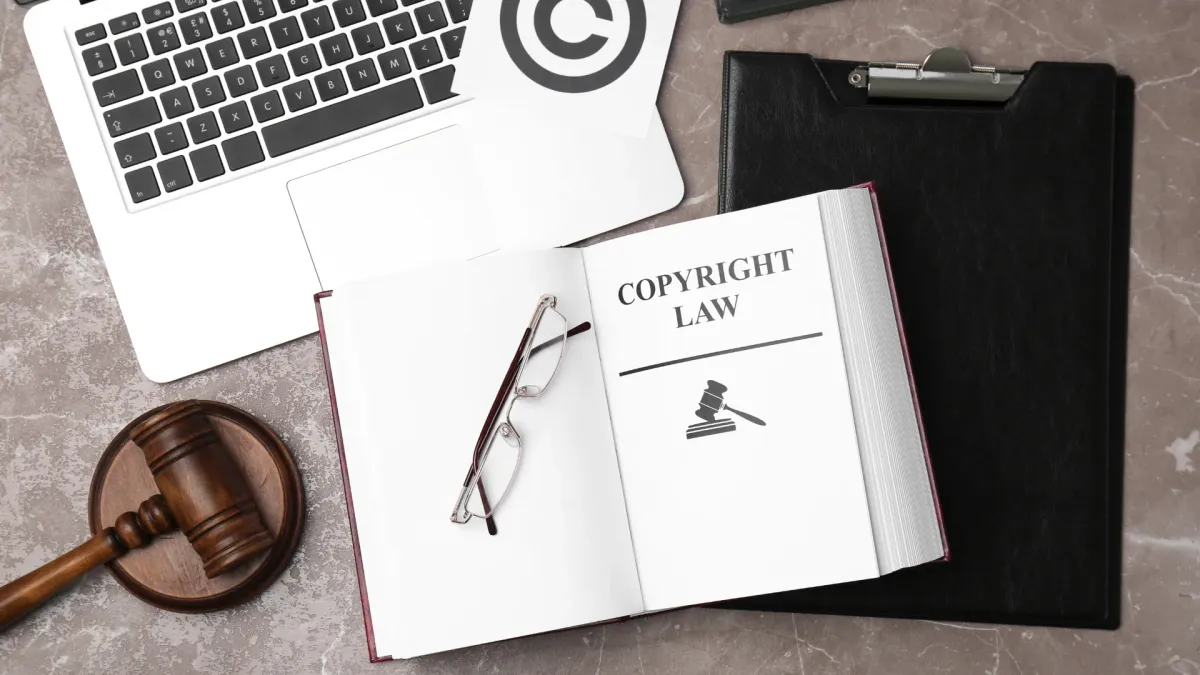
Legal and Copyright Considerations
In the digital age, copyright laws and intellectual property rights are paramount concerns for video creators. Understanding these legal and ethical considerations is crucial to protect your content and avoid legal pitfalls:
- Copyright Basics: Familiarize yourself with copyright laws and regulations in your country and globally. Copyright protects the original work of creators, including videos, music, images, and text.
- Licensing and Permissions: If you plan to use copyrighted material in your videos, obtain the necessary licenses and permissions from the copyright holders. This includes music, stock footage, and any third-party content.
- Fair Use: Understand the concept of fair use, which allows limited use of copyrighted material for purposes such as criticism, commentary, news reporting, or education. However, the application of fair use can be complex and context-specific, so seek legal advice when in doubt.
- Public Domain: Utilize content that is in the public domain, meaning it's not protected by copyright and can be freely used by anyone.
- Attribution: When using others' content under license, always provide proper attribution as required by the licensing terms. Failure to do so could result in legal consequences.
- Original Content: Whenever possible, create and use original content in your videos. This reduces the risk of copyright issues and showcases your unique creativity.
- Stay Informed: Copyright laws and regulations evolve, so stay informed about updates and changes. Consult legal experts or resources specific to your jurisdiction for the most accurate guidance.
Respecting copyright and intellectual property rights is not only a legal obligation but also an ethical one. Being proactive in addressing copyright considerations will protect your videos from takedown requests and potential legal disputes, allowing you to focus on creating and sharing your content with confidence.
Video Monetization Strategies
If you're looking to turn your passion for video into a source of income, exploring various monetization strategies is essential. Here are some strategies to consider:
- Advertisements: Partner with advertising networks like Google AdSense or YouTube's AdSense program to display ads in your videos. You earn revenue based on ad views, clicks, or impressions.
- Sponsorships: Collaborate with brands and companies relevant to your niche to create sponsored content. You receive compensation for promoting their products or services in your videos.
- Affiliate Marketing: Join affiliate programs and promote products or services in your video descriptions or within the content. You earn commissions on sales generated through your affiliate links.
- Subscription Models: Platforms like Patreon allow you to offer exclusive content or perks to subscribers who pay a monthly fee to support your channel.
- Digital Products: Create and sell digital products related to your content, such as e-books, courses, or templates. Use your videos to promote these products to your audience.
- Merchandise Sales: Design and sell merchandise, such as T-shirts, mugs, or posters featuring your brand or content-related designs.
- Crowdfunding: Use platforms like Kickstarter or Indiegogo to crowdfund specific projects or video series. Your audience contributes funds to support your creative endeavors.
- Donations: Enable donations through platforms like PayPal or Buy Me a Coffee, allowing your viewers to contribute directly to your channel.
- Membership Programs: Offer a membership program on platforms like YouTube or Patreon, where members pay a monthly fee in exchange for exclusive content, perks, or community access.
- Teaching and Consulting: Leverage your expertise by offering online courses, workshops, or consulting services related to your niche.
Each monetization strategy has its pros and cons, and the right approach may vary based on your content, audience, and goals. Consider diversifying your income sources to mitigate risks and create a sustainable revenue stream from your video content.
Keep in mind that building a strong audience and delivering value should always be your primary focus, as monetization strategies are most effective when paired with engaging and relevant content.
Crisis Management and Controversy
In the online world, controversies and negative feedback can happen to anyone. Being prepared to handle these situations professionally is essential to maintain your reputation and credibility. Here's how to navigate crisis management and controversy effectively:
- Stay Calm and Professional: In the face of criticism or controversy, maintain a calm and professional demeanor. Avoid engaging in heated arguments or responding emotionally.
- Listen and Acknowledge: Pay attention to the concerns and feedback raised by your audience or critics. Acknowledge valid points and address them constructively.
- Apologize When Necessary: If you or your content have caused harm or offense, be ready to issue a sincere apology. Take responsibility for any mistakes and outline steps for improvement.
- Private Resolution: Whenever possible, handle disputes or negative feedback privately through direct messages or emails. Public disputes can escalate quickly and harm your reputation.
- Moderate Comments: Consider implementing comment moderation to filter out hate speech, harassment, or inappropriate content in the comments section of your videos.
- Transparency: Be transparent about any changes, improvements, or actions you plan to take in response to feedback or controversy. This builds trust with your audience.
- Learn and Evolve: Use crises and controversies as opportunities for growth and improvement. Learn from your mistakes, adjust your content or behavior, and demonstrate your commitment to positive change.
- Seek Support: Don't hesitate to seek advice or support from trusted friends, colleagues, or mentors when dealing with difficult situations. They can provide valuable perspectives and guidance.
- Crisis Response Plan: Develop a crisis response plan in advance, outlining steps to take in various scenarios. Having a clear plan can help you respond swiftly and effectively.
- Legal Considerations: Consult legal experts if you face legal threats or challenges. It's essential to understand your rights and responsibilities in such situations.
Handling crises and controversies requires a delicate balance of empathy, communication, and resilience. Your response can significantly impact how your audience perceives you and your brand.
By approaching these challenges with professionalism and a commitment to improvement, you can navigate difficult situations while maintaining your integrity and credibility.
Conclusion
To wrap it all up, we've explored a multitude of essential elements for creating effective videos. From understanding your audience to mastering video editing and handling crises, there's a lot to consider.
Remember that the journey to video mastery is ongoing. Continuously improve your skills, stay updated with industry trends, and never stop creating engaging content.
Frequently Asked Questions (FAQs)
Common Video Production Questions
- What equipment do I need to start making videos?
- You'll need a camera (smartphone or DSLR), a microphone, good lighting, and video editing software. Additional equipment depends on your content.
- How can I improve the lighting in my videos on a budget?
- Natural light is your friend. Film near windows during daylight hours or use affordable LED panel lights to enhance your setup.
- What are the best practices for recording audio in noisy environments?
- Invest in a directional microphone to focus on your subject's sound. Use noise reduction techniques in post-production to clean up audio.
Tips for Overcoming Challenges
- How do I stay motivated when my video doesn't get many views?
- Focus on your passion for creating, not just the numbers. Consistency and improvement are key; views will come with time and effort.
- What can I do if my video receives negative comments or dislikes?
- Address valid criticism constructively and consider ignoring or moderating trolls. Remember that not everyone will be your target audience.
- How can I deal with copyright claims on my videos?
- If you receive a legitimate copyright claim, consider editing or removing the disputed content. Always respect copyright laws to avoid legal issues.
Remember that success in video content creation takes time and dedication. Keep honing your skills, adapting to your audience's preferences, and staying true to your creative vision. With persistence and a commitment to excellence, you can master the art of effective video production.


